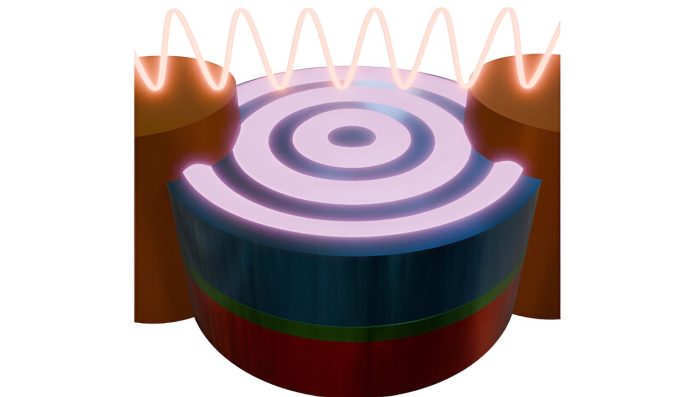
Scientists from the University of Vienna, the Max Planck Institute for Intelligent Systems in Stuttgart, and the Helmholtz Centers in Berlin and Dresden have made a breakthrough in developing energy-efficient, smaller computing devices.
Their research, published in Science Advances, explores how tiny magnetic waves, called spin waves, could be used to power the next generation of computers.
Today, the central processing units (CPUs) in our laptops, desktops, and phones rely on billions of tiny components called transistors.
These transistors are built using a technology known as complementary metal oxide semiconductor (CMOS).
However, as our demand for smaller and more powerful devices grows, we’re hitting physical limits with CMOS technology.
Plus, current computing methods consume a lot of energy, leading scientists to search for alternatives.
One promising alternative involves magnons, which are the smallest units of spin waves. To imagine how spin waves work, think of a calm lake.
If you drop a stone into the water, waves ripple out from where the stone hit.
Now, picture replacing the lake with a magnetic material and the stone with an antenna. The waves that spread out are spin waves, and they can carry energy and information with very little loss.
Spin waves can be harnessed to create “magnonic” devices that perform both traditional and innovative computing tasks. However, to make these devices smaller, scientists need to generate spin waves with very short wavelengths.
This has been a challenge because the tiny antennas used today to create these waves are not very efficient.
The researchers from Austria and Germany discovered a simpler, more effective solution. They found that by passing an alternating electric current through a stack of magnetic materials with swirling patterns, they could create spin waves with much greater efficiency.
These magnetic stacks are known as synthetic ferrimagnetic systems, which have layers with opposite magnetization directions.
For example, if the top layer has a clockwise magnetic swirl, the bottom layer swirls in the opposite direction. This setup makes it easier to generate spin waves using the magnetic fields produced by the alternating current.
Using advanced X-ray microscopy, the team was able to observe these spin waves at incredibly small scales and high frequencies. They also found that by applying pressure to special materials in the magnetic stack, they could change the direction of the spin waves just by adjusting the electric current. This discovery is a significant step towards creating active magnonic devices that can be reprogrammed as needed.
To better understand the mechanics behind this new method, the researchers used cutting-edge simulation software. This allowed them to simulate large-scale behaviors and gain insights into how these highly efficient spin waves are generated and controlled.
This research could pave the way for new types of computing systems that are not only more adaptable but also much more energy-efficient than the ones we use today. By harnessing the power of spin waves, we could see the development of reprogrammable magnonic circuits, opening the door to a future of more efficient, smaller, and smarter computing devices.
Source: University of Vienna.



